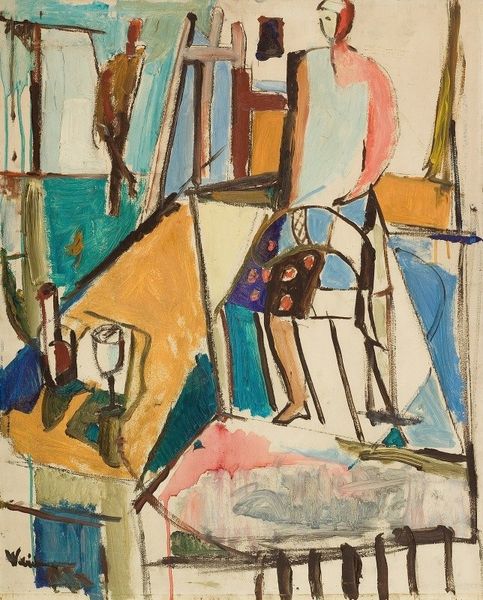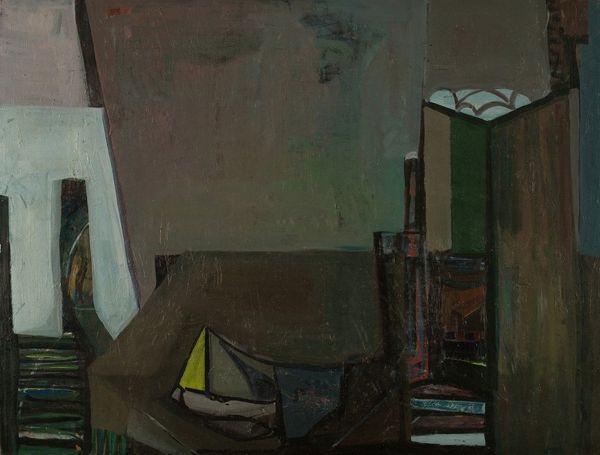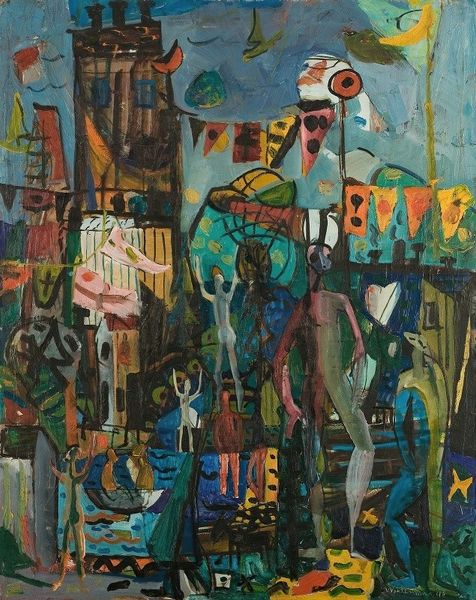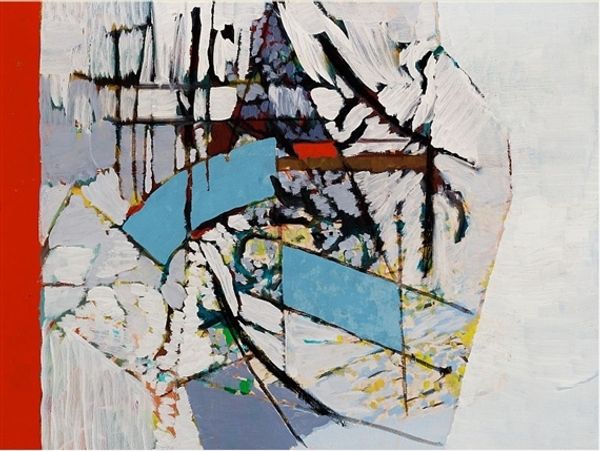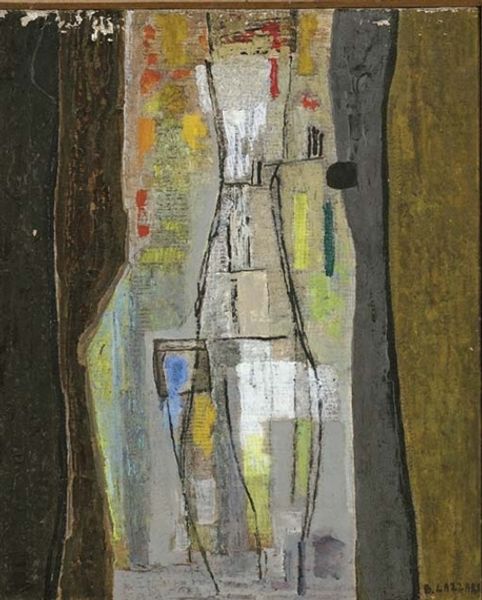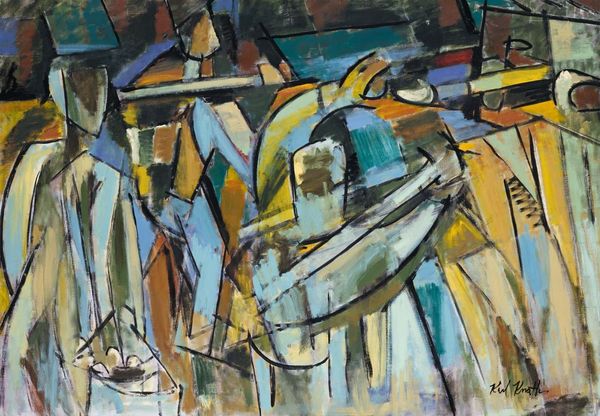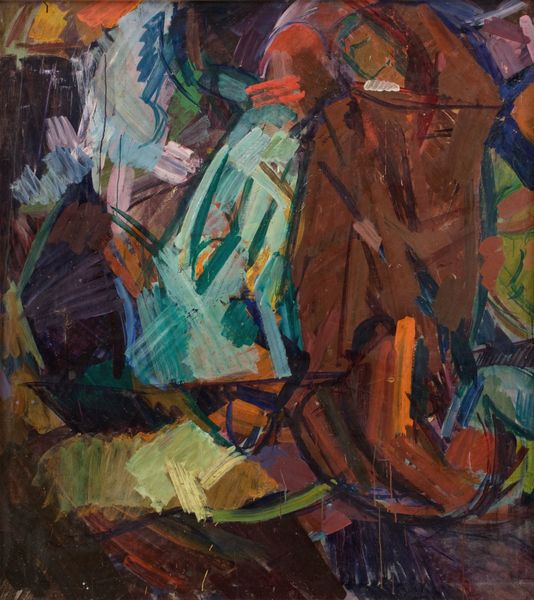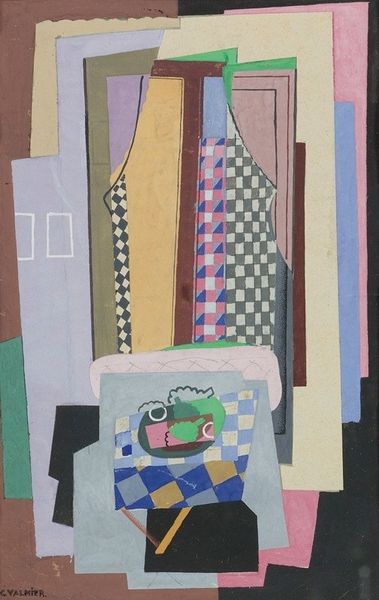
Copyright: Public Domain: Artvee
Curator: Standing before us, we have Jakob Weidemann's 1947 acrylic painting, "2 i badet," or "Two in the Bath". Editor: My initial reaction is cool serenity. Despite the fractured composition, those blues and whites create a really calming atmosphere. Curator: Yes, the fragmented nature and almost geometric rendering of forms points toward the abstract expressionist movement brewing at the time. Weidemann, as a Post-Impressionist and key figure in Norwegian modernism, bridges the gap between the European avant-garde and a distinct Scandinavian sensibility. One could also trace Fauvist echoes within its coloration and simplified shapes. Editor: Interesting—the bathing figures themselves, or what I assume are bathing figures, seem like fractured idols. The fragmented forms resemble shattered ancient statues, recontextualizing an image of cleansing. There are even marks, scattered 'S's perhaps, inscribed as ritualistic signs. Does it symbolize societal tensions and purification after World War II? Curator: It's difficult to know for sure what Weidemann was thinking. Given the date, the post-war atmosphere is highly influential. Artists grappled with new realities. These abstracted bathers also mirror a wider re-examination of societal norms regarding nudity, bodies, and the public display thereof. Abstraction becomes a refuge but it also offered freedom to approach traditionally contentious subjects. Editor: Right, so the abstraction becomes a protective veil. These figures could reflect ideas of physical and emotional healing amidst political realities. It’s evocative, actually. Curator: The placement in time, immediately following the Second World War, suggests these fragmented human forms symbolize rebuilding both society and identity. Editor: Absolutely. The ‘S’ inscriptions might function as personal ciphers as much as historical indicators of cultural renewal or even cleansing rites in that transformative era. Thank you, that offers me much more to think about. Curator: Likewise; examining such work demonstrates that post-war artistic movements addressed, on all levels of society, both the collective and personal experience, with painting offering powerful methods to symbolize emotional or social history.
Comments
No comments
Be the first to comment and join the conversation on the ultimate creative platform.


